Maya ruins and rain forest – Yucatán by bike
Country: Mexico
From Escárcega to Bacalar
Lesson learned: It’s possible to build a wheel in 1 ½ hours
Most wonderful miracle: The seven-colored lagoon
Animals we saw: cicadas, a wild boar, peacocks, tarantula, colorful birds, iguanas, salamanders, geckos, mosquitos, and a fox
Days on the bike: 4
Kilometers cycled: 308
Average kilometers per day: 77
Total kilometers cycled: 29.910
Yucatán by bike
Missed the last entry? Here it comes: Cycling Southern Mexico – Tabasco and Campeche by bike
Blog auf Deutsch: Von Mayaruinen und Urwald – Yucatán mit dem Fahrrad
We were pretty excited. Tropical rainforest was waiting for us, I even believe that it is primeval forest, hardly touched by humans for many, many years. And ancient Maya ruins were awaiting us, some of them were situated pretty much right next to the highway. We started the ride early in the morning, so we would have enough time during the day to explore some sights and avoid the hours with the harshest sun.
The times of the flat roads were over, we biked rolling hills through a green landscape. Leaving Escárcega we biked through a couple of villages where they took environmental protection pretty serious. If you were caught throwing out rubbish, you’ll pay a high fee or even end up in jail for a bit. It’s a good idea and the sides of the road were really clean.
It was pretty hot already when we rolled down one of those hills after about 18 kilometers. Roberto heard a loud snap and braked down immediately. Good on him, because his rear wheel had stuck completely. It took us a while to figure out why, then we finally saw a crack in the rim that measured several centimeters. We detached the wheel and Roberto was just about to try and hitch a ride, when the very first passing car had already stopped. It was a pick-up truck with a near-empty cargo area.
On the ride back to Escárcega we wondered what to do now. I highly doubted that a small town like Escárcega had 28 inch rims stocked. 26 and 20 were the usual sizes here. Shall we take the bus all the way to Campeche City? Or will we need to find a bus all the way to Chetumal? That would make it a minor detour of only 40 kilometers but it would also mean to have to skip our four-day jungle bike ride.
We were quite disappointed, but then again, lucky for us Roberto had reacted real quick and got off the bike safe and sound without a single scratch on himself. That’s the most important thing. As long as we’re healthy and we’re together, everything else is of less importance.
Our friendly driver stopped at the local bike shop where we talked to mechanic Jacob. A minute later he left us with our jaws open, when he returned with a shiny new 28” rim. Wow. Jacob decided to start attaching the spokes right away. “Why don’t you two go and have a long breakfast?” Well, now that we had the time for it, why not indeed? Less than an hour and a half later, Jacob had finished his work. The wheel went perfectly round.
By ourselves we would have probably spent all day on this job and gotten into at least one argument every hour. Jaw drop number two. Number three followed when Jacob presented us with the bill. 210 Pesos for rim and work. That’s about 10 €. We couldn’t believe our luck. So we left Jacob with a big tip and left town with just as big smiles in our faces. It was only 11 am. Boy we are two very lucky people.
The first 18 kilometers were a bit boring and it had gotten real hot, so we stopped at a shady bus stop. Roberto disappeared for a minute and returned with a big block of ice. He had asked for some spare ice cubes in a shop, and that had been all they had had. How could we crush that block into small bits?
Turns out we couldn’t. So Roberto grabbed our muesli bowl, added the block of ice and some of the hot water in our bottles, stirred with a finger and began to drink straight from the foldable bowl. You just have to be a little creative sometimes. Nevertheless I was quite relieved to know that out here nobody knew us.
Later that afternoon we found a roadside stand, bought some Agua de Melón and half a watermelon, and took them to the lagoon of Silvituc, where we stopped for lunch. Two tame peacocks approached us. One quickly lost interest, but the other one spotted the watermelon.
It didn’t want the rind or the flesh though and only got active when I spat out some pips it came running straight towards them. In the end it literally ate from the palm of my hand. It was an hour before sunset when we reached the next village, but there was a thunderstorm coming up, so we decided to stay.
It was only 5.30 pm when we pitched the tent next to the village library. The sun had just set when the first raindrops fell. We were inside the tent already, enjoying the fresher air that the cool rain brought in. Just minutes earlier it had felt like inside an oven.
It was another early start and we reached the Maya ruins of Balamkú by 9 am. We were the only visitors. Beside us there was a young man who sold the tickets, and his uncle, who opened the door to a very old and well preserved stucco frieze. Pretty impressive stuff. I’ve read that it is some 1500 years old.
We continued the jungle ride and were caught by a couple of true tropical rain showers. It was a hot day so the rain was rather refreshing and the damp leaves around us were the best sign that these rains belonged here daily.
The few car drivers drove more carefully, so I took the time to have a good look in the woods. I hoped to see some monkeys or even a jaguar on my concentrated search.
We reached the ruins of Chicaná and again we were the only visitors. Unfortunately they were about to close so we pretty much rushed through the ruins. Only minutes later we could see some of the Becán ruins from the highway.
We had planned to spend a night camping in there, but camping was forbidden and the ruins were guarded say and night. So we continued to the town of Xpujil (pronounced shpoo-heel) where they offered real cheap rooms. We were in need of a good shower, so that was a yes.
The hotel’s owners had adopted a wild boar some 14 years ago. Now it was the dog’s best friend and was treated like any other pet too. It loved to be tickled by its owner and walked straight towards me. First a peacock, now a wild boar, I must be having a run! Guess they can smell who’s a friend of animals.
I held my hand out so it could smell it. Next moment I heard a loud “smack” and my hand was all full of boar drool. “Careful with the boar”, Roberto turned to me, “The owners just told me, it was a biter”. “Oh.” Was all I could say, staring at my slimy hand.
Next morning we walked over to Xpujil’s ruins. And for the third time we were the only visitors. As usual, it was absolutely impressive. Walking through the jungle with all its noises and its smells and the heat and humidity and after some hundred meters when you stopped thinking about it, a ruin appears. Just imagine what the people must have felt who actually explored these ruins! Or imagine the habitants!
Today was a very rainy day. And it was also the day that Roberto explored his new superpower: smelling the moment the every-grey sky would let go of a heavy downpour.
Today we met Don Ángel, a 70-year old local who, slowly but steadily, pushed his bike up a little hill. Roberto had a little chat with him and thought he was a very nice person. Since Don Ángel was also riding 28 inch wheels, Roberto gave him our spare outer tire. It wouldn’t have fit the new rim too good anyways. Don Ángel then invited us to spend the night at his place.
He grew up in Chiapas but had lived many years in the Yucatán peninsula now. His pension was more of a symbolic sum, so at 70 years he still worked every day. And he was fitter than many his age. There wasn’t any family to take care for his needs, so he walked into the hills every day and cut material for the palm tree rooftops.
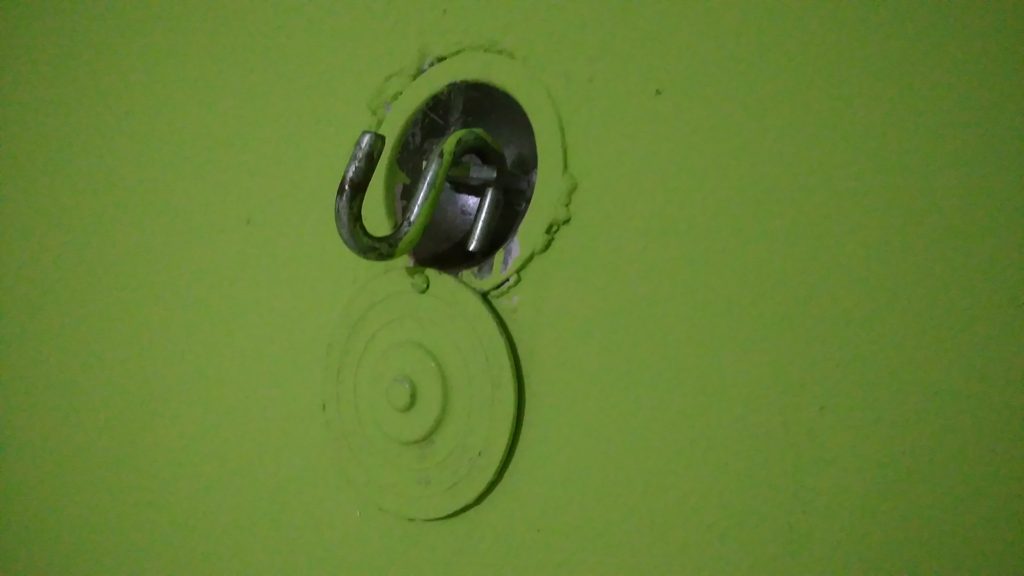
A hammock hook (or two) is a “must” in every Campeche building. Even offices and expensive hotels are said to be equipped with them
The Mexicans never cease to impress me. While they had all the reason to complain about the little governmental support, they rather get creative and find a way to work independently.
Roberto bought a big bottle of coke and we sat outside Don Ángel’s hut and talked about life. Don Ángel told us that in his tiny village there were eight different Christian churches. He was an Adventist. “I keep the Sunday holy, others keep the Saturday and again others no day at all. Everybody can do as they wish, this is a very peaceful village”
There were two buildings on his property: a little one-room concrete-and-stone house, that the state had built for him, and a hut with a palm roof, that he had built himself. He lived in the hut and the house stood empty, so we moved in for tonight. As it is tradition in every building down here, there were hammock hooks in the walls.
Don Ángel had even hung a hammock and Roberto tried to sleep like the locals do. Fortunately he had inflated the sleeping pad too, just in case. How did the locals manage to sleep comfortably all night?
It was a foggy morning. Fog always looked so mystical here in the tropical rain forest. But most of all, it kept the harsh sun out for a little longer than on a usual morning. We climbed the last couple of hills and finally we reached the crossroads.
It was 15 kilometers to Belize, 20 kilometers to Chetumal by the sea, or another 20 kilometers to Bacalar. We turned left and headed for Bacalar.
After 4000 kilometers of cycling Mexico we finally saw them: our first other bike travelers! It was Bruno and Irina from the “Ruta Chichimeca” team. Team partner Pirul arrived a few minutes after them. The Chichimecas are a group of people who cycled Mexico together, usually from the Northwest to the Southeast.
They did this every year, some joined once, and others every single year. One of these others was Pirul, who was about to finish his 10th Chichimeca tour in Chetumal. It was still early enough, so we all sat down in front of a shop and Pirul bought a round of beer. Of course we bought another one, but then Pirul got a third.
Keeping it short: it was a very fun meeting and it was already afternoon when we all got back on our saddles. It was another 15 kilometers for us and another 20 for them. The road was pretty flat and we had a wide shoulder all to ourselves.
Finally we reached Bacalar. For years this was the place we had been dreaming about visiting. We had spent many hours studying the map and looking at pictures and now we were finally there. Bacalar was a little town situated on the side of the lagoon of the same name. In 2007 it was named one of the 111 “Pueblos Mágicos” (magical little towns).
It was such a calm place that we saw two dogs sleeping right in the middle of a crossroad, but at the same time it was a pretty touristy place with plenty of family-run pensions and campgrounds all over the place. It was more of an alternative tourism here, lots of people who wanted Caribbean feels without all those fancy hotel blocks.
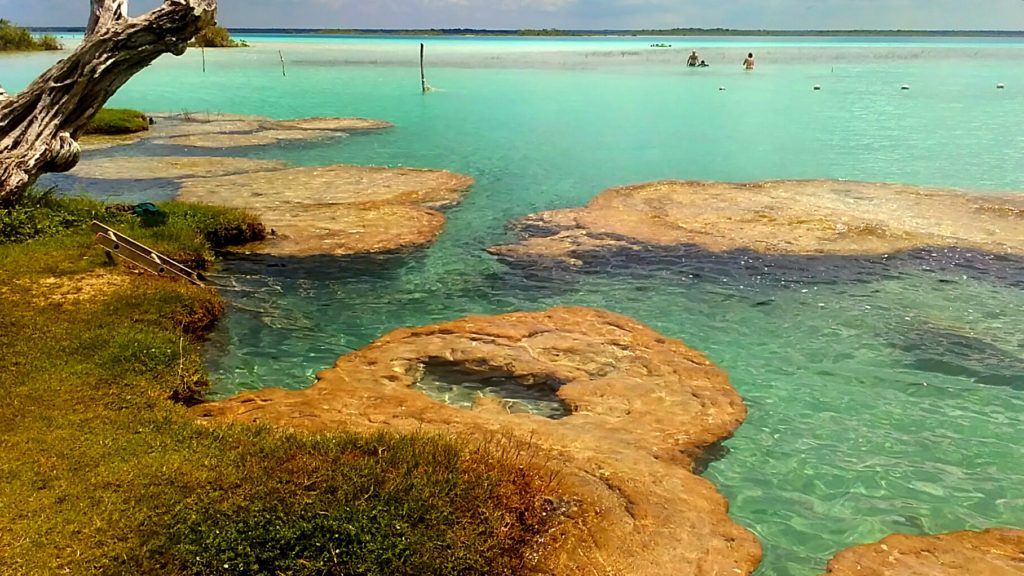
These rocks are actually living beings and very important for the health of the lagoon. I believe now you see why it’s called the seven-colored lagoon.
We left our stuff at Laura’s and Rebecca’s, two sisters who ran the Café Inchiich in the center. They privately rented out their little guest room and we were lucky enough that it was free, because over here in paradise even camping was really expensive. In the evening we held a little presentation in the café.
We spent the following days getting to know the town and the lagoon. Alejandra, who had grown up here, took us for a bike ride alongside the lagoon and told us about the state’s cyclists’ project. There were 11 counties in the state of Quintana Roo. Every month the cycling community of one county gets together and plans a tour for cyclists of all the other counties to join.
That way all cyclists of Quintana Roo have the chance to bike guided tours all over their state and play host for the others, showing off with their county’s own attractions. 2011 Bacalar became its own county and ever since Alejandra had co-planned her county’s tour.
We had been rushing through the country for a few weeks in order to enjoy a few rest days here and we did feel the vacation spirit coming. During one of our bike strolls through town and alongside the lagoon, we noticed that most of the lakeside access points were privately owned. Some big mansions with fences blocked the public entry. The owners were rich foreigners, who used the mansions a few times in the year only. We had seen the very same thing happening in Hawai’i, New Zealand and in the Baja before and it made us sad to see the prettiest of all places without a single soul enjoying them.
Most of the lagoon side buildings were family-run guesthouses though. Some were boutique places, others rather simple hostel style pensions. Fortunately not a single big hotel complex had found its way into Bacalar yet. Neither has a cinema or a big supermarket chain branch. In between all those privately owned properties there were some public lagoon accesses for everybody to use. Our favorite was a free access with a long wooden jetty that ended with a big Palapa on poles, surrounded by clear water.
The lake bed was neither muddy, nor were there many algae. It was simply yellow sand with a few plants near the banks. The climate was hot but with a few strong downpours every day, that kept the heat at bay. When the sun returned, you can see the lagoon shining in the brightest turquoise and blue tones. There were several “cenotes”, that’s deep holes, where underground rivers joined the lagoon. Every river’s water had a slightly different color and for all those tones the Lagoon of Bacalar had been nicknamed the seven colored lagoon.
It was possible to swim over the deep cenotes, but it was a strange feeling. Nobody really knew how deep they were. A few years ago, some divers went out to check the depth of the “centote azul”, but after 70 meters they had to return, for the plants were too many and they wouldn’t want to risk getting tangled. That’s pretty deep for one single water hole.
We started the last day with a sunrise-SUP tour. We had become SUP (stand up paddleboard, there’s more information and pictures in Roberto’s article in spanish) fans ever since our first try in Hawai’i. Guide Daniel knew every single spot of the lagoon. It tranquilized me to know that he had never seen any crocodiles here either. This really was a special place. Colors like in the Caribbean Sea, but without the danger of sharks, jellyfish, crocodiles or leeches. In a group of eleven we made our way towards the rising sun and stopped at the canal of pirates.
This was where – via a system of very confusing channels – the lagoon was connected to the sea. If you wanted to follow it, you’d end up somewhere in Belize though. That was quite alright for back-in-the-day pirates though, as they could find their way through, leave their treasures and return to the open see again. The castle that was situated in Bacalar’s center had been built to defend these pirates. Rumor has it that until this day there were some pirate treasures hidden in the lagoon. We didn’t bother searching them, as we were far too busy exploring a tiny section of the 42 kilometer long lagoon.
Standing on our boards we slowly slid from the shallow water and sandy ground over the steep and rocky abyss of a cenote. The water was clear as glass. It was exciting and also a bit creepy, as if we were flying over a cliff. Daniel had brought a few diving goggles and we hopped into the water to explore the sides of the cenote. After three hours of paddling we reached the end of the tour and ate amounts of bread and muesli as if we hadn’t eaten for days.
It was our last afternoon in town, when I decided to take a new route downtown. That was when I met José, a cycling traveler from Mexico City. It was his first bike travel and he was on the way from Tulum (about 220 kilometers north) over to Villahermosa.
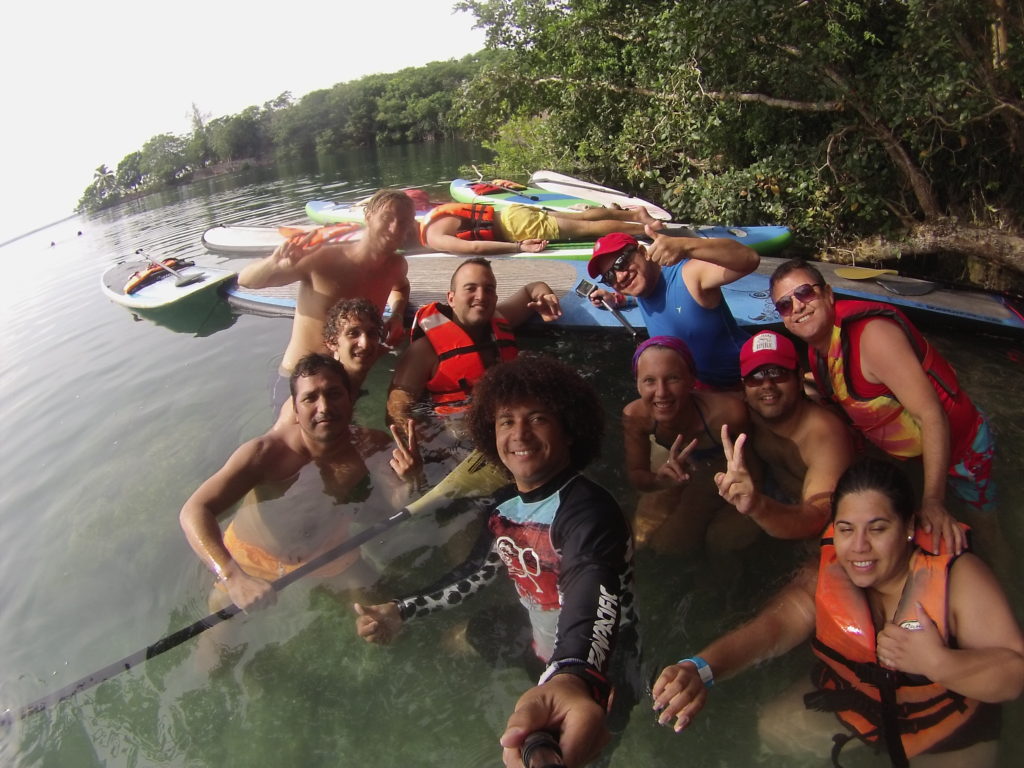
Credit goes to Daniel (in he center), best guide and only one brave enough to bring a camera. The guy in the back was slightly hungover and spent most of the time asleep.
We were a bit sad that the ride through North America was going to come to an end soon. In Cancún we would fly out of the continent! But till then it was another 400 kilometers of white sand and turquoise waters. Caribbean beaches here we come! Read more in the next blog: Discovering the Mexican Caribbean by bicycle

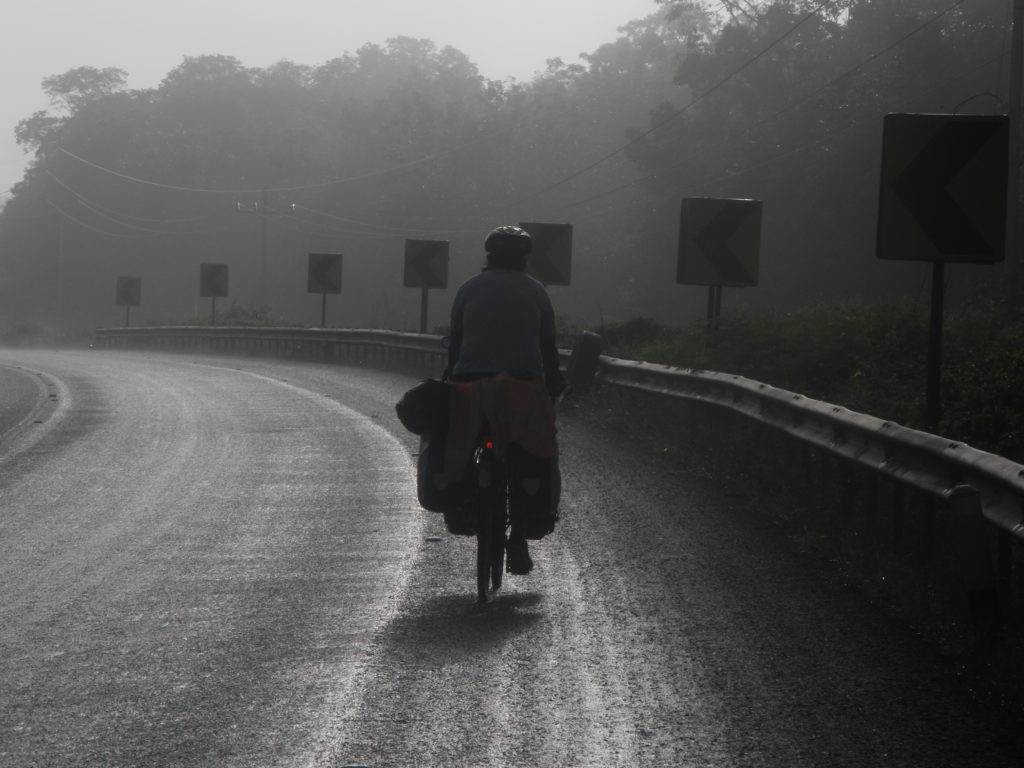
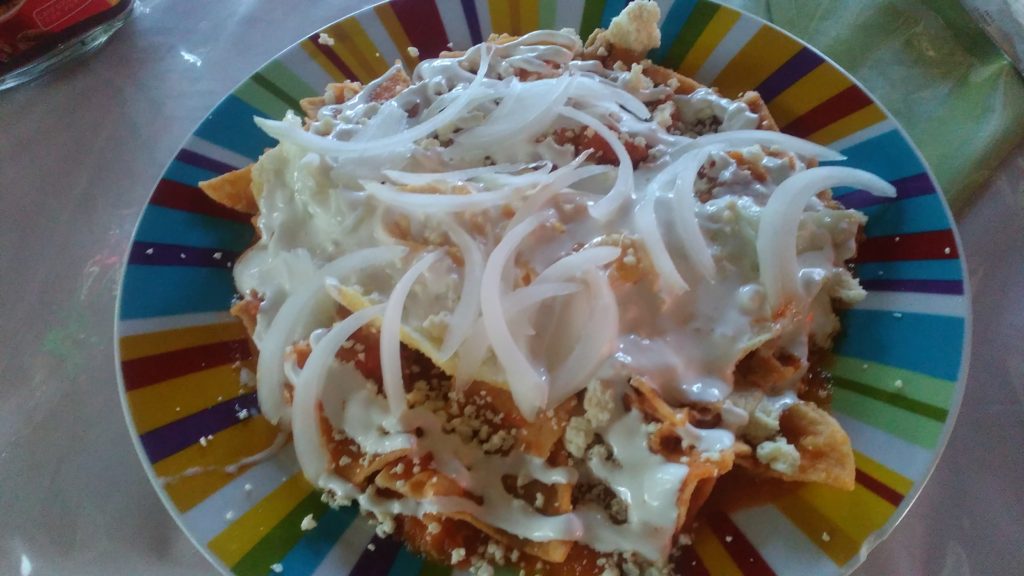
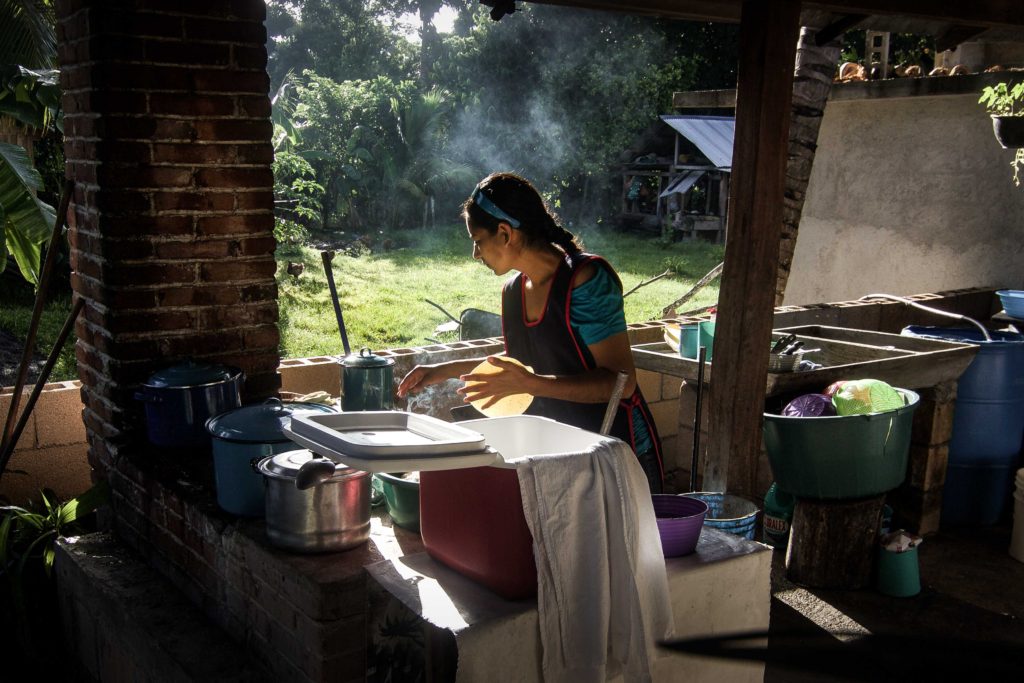
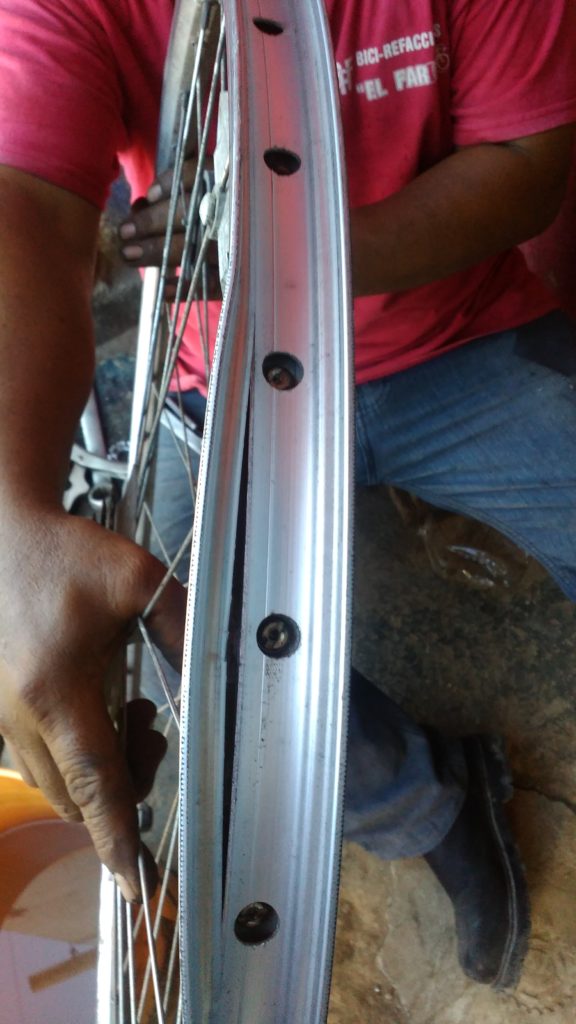
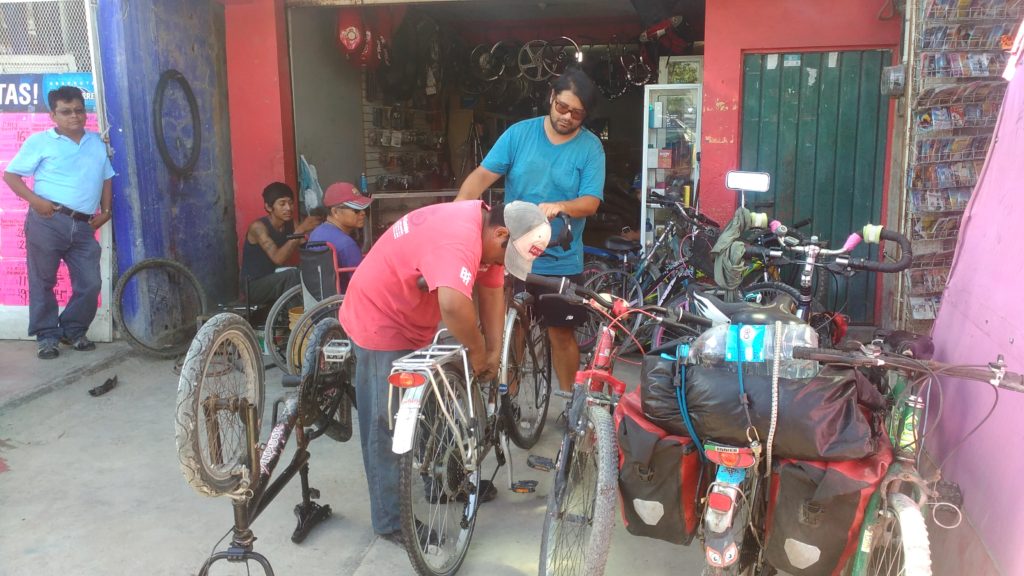
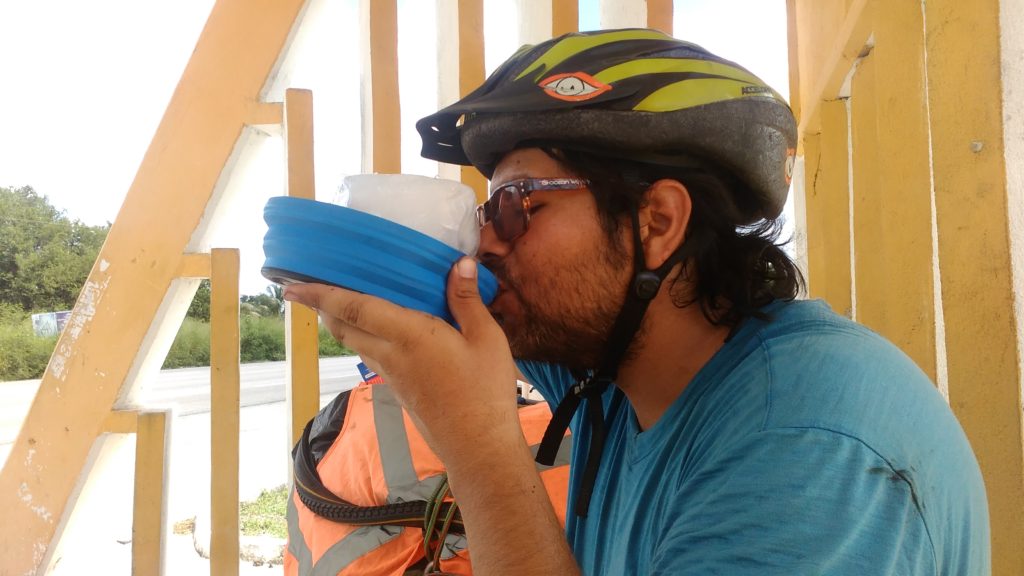
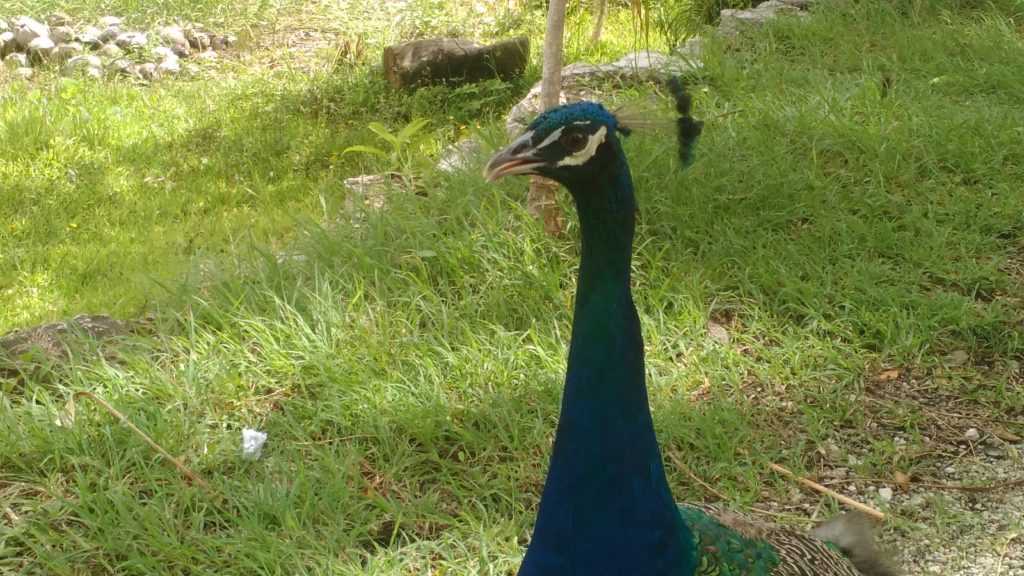
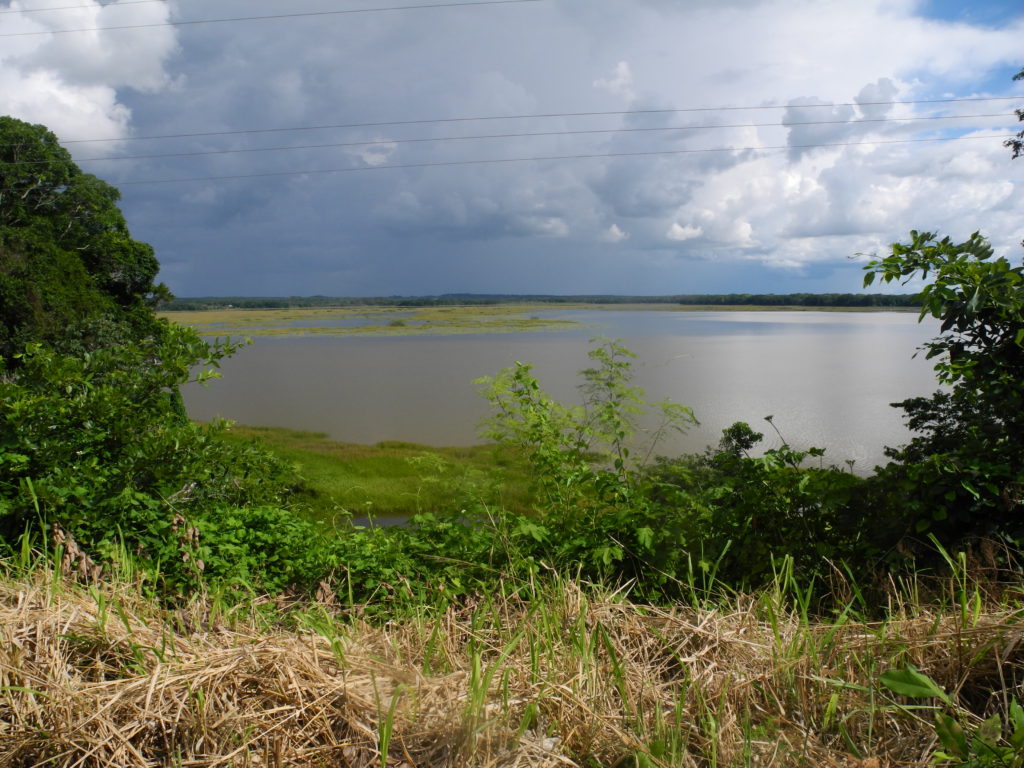
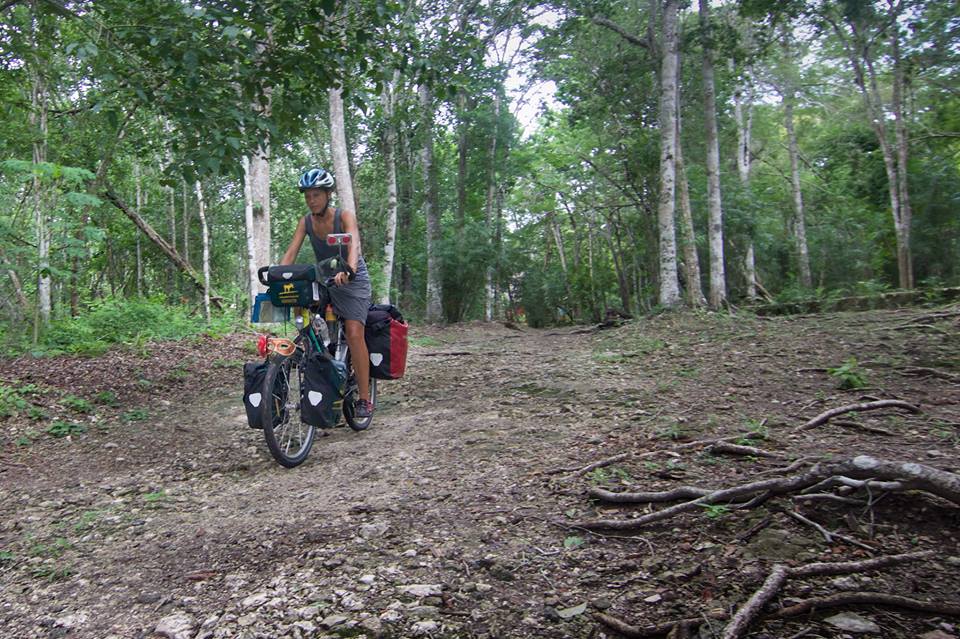
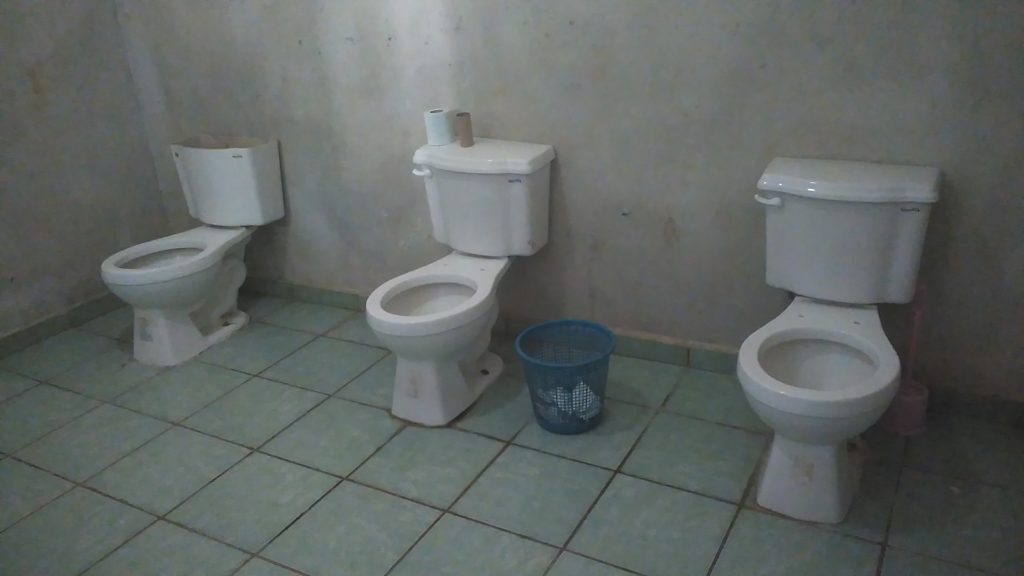
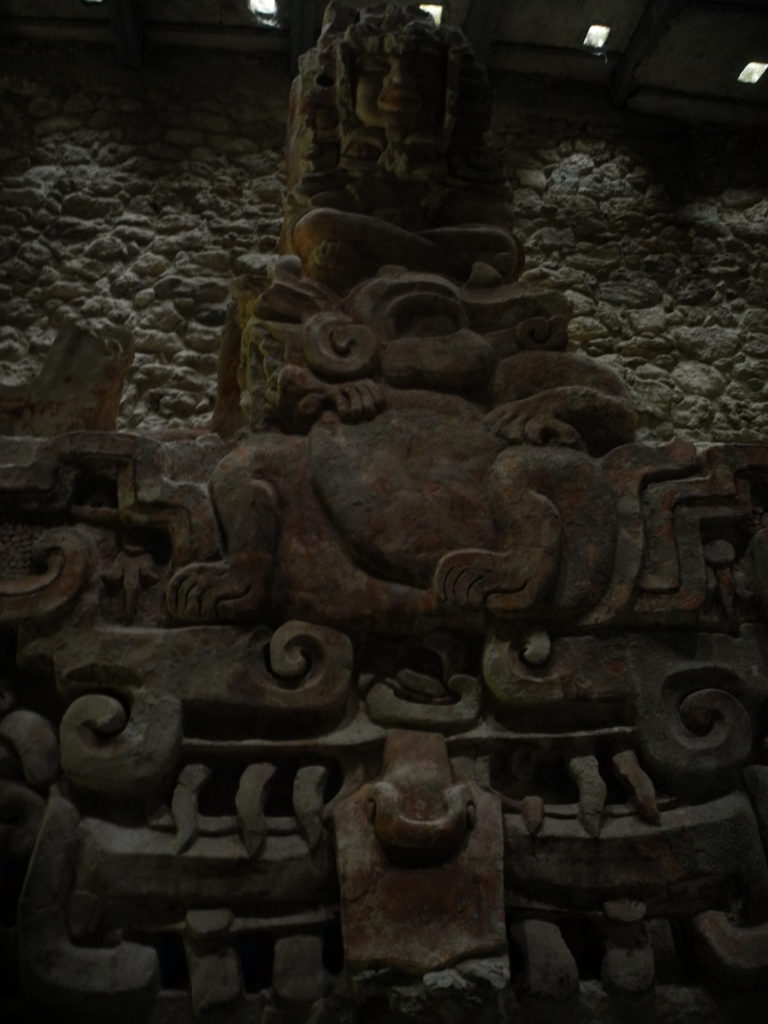
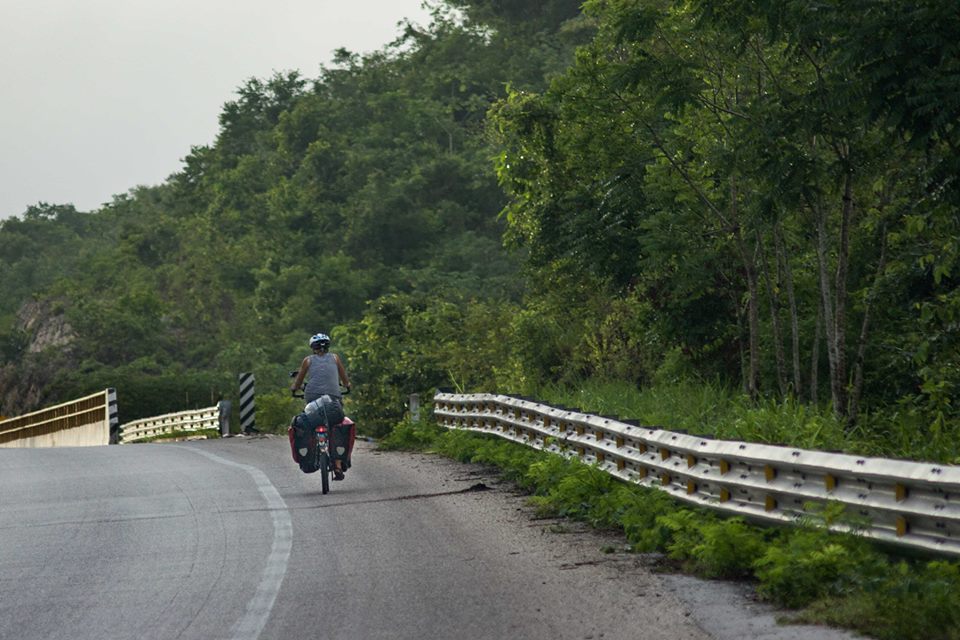
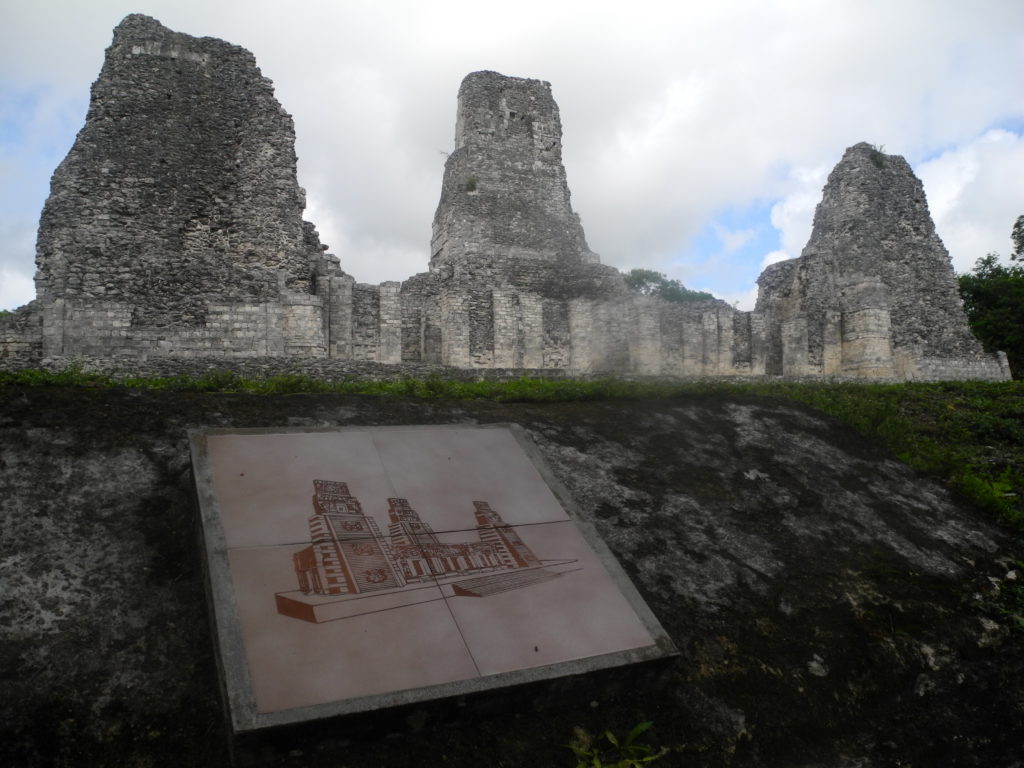
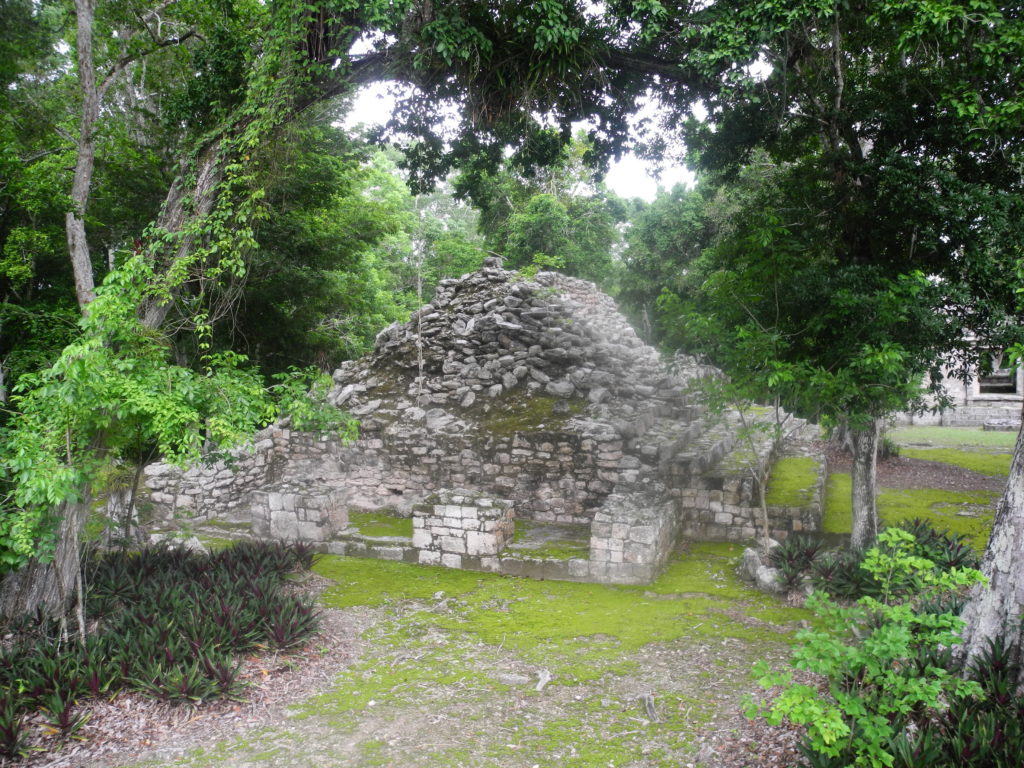
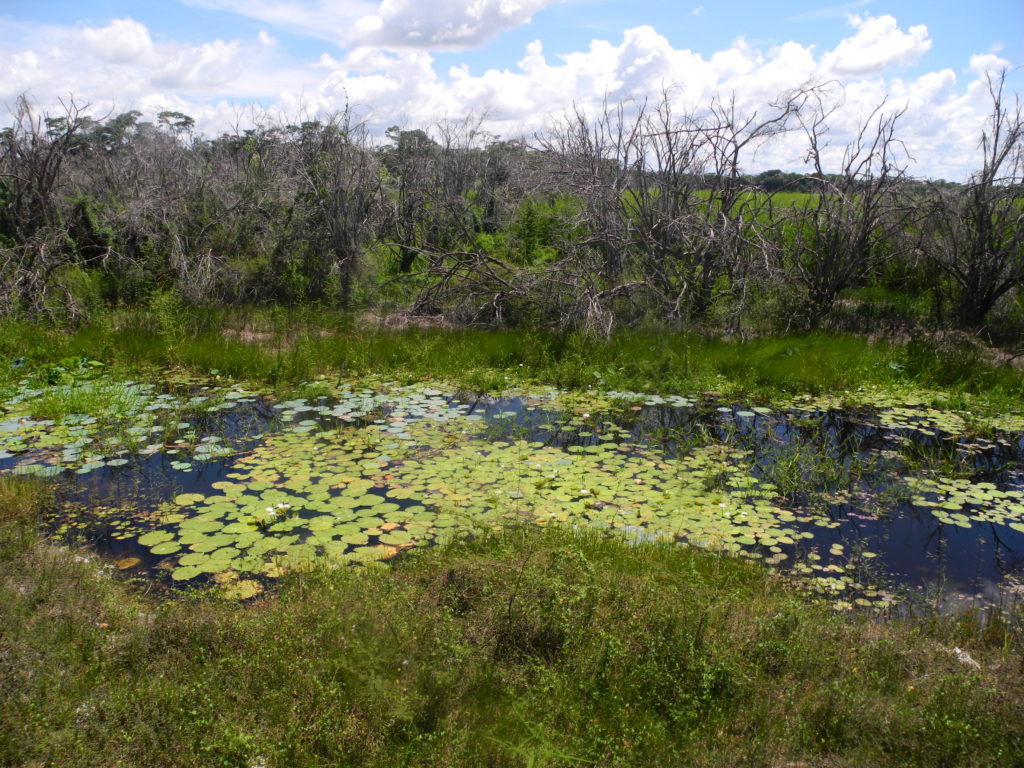
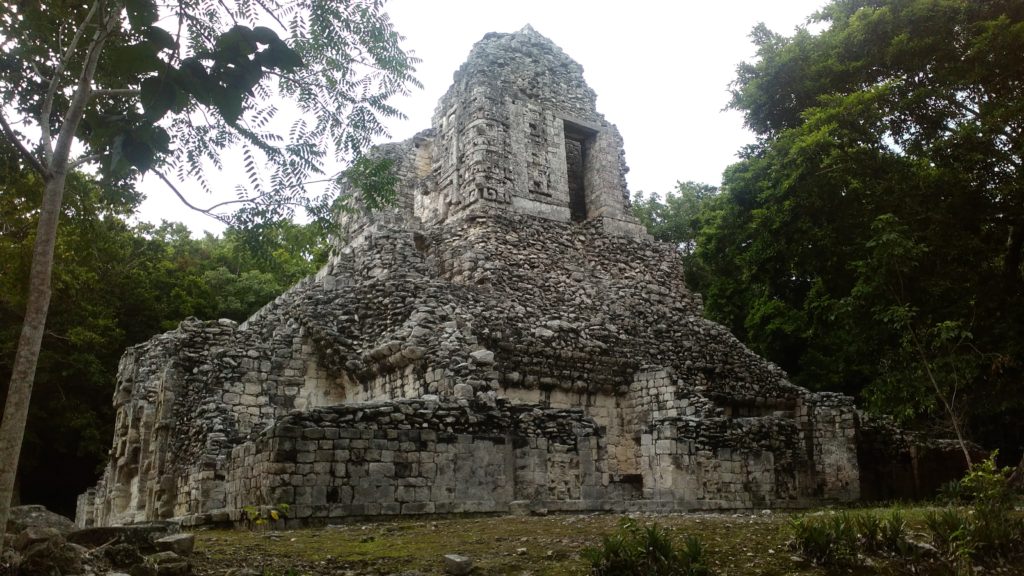
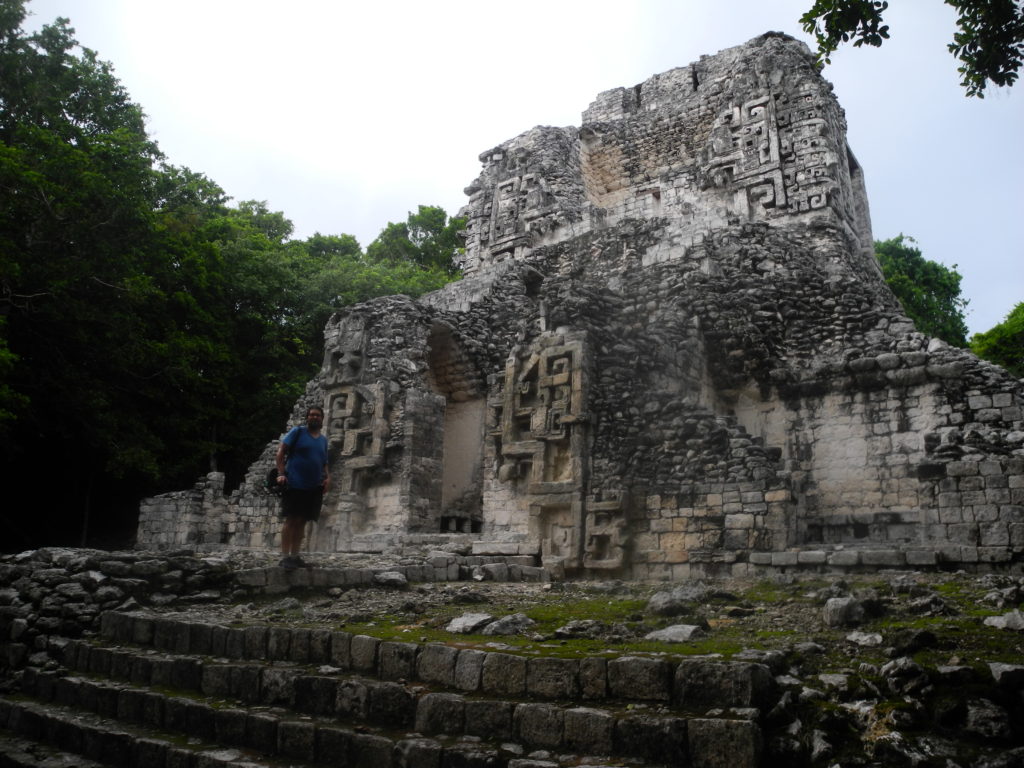
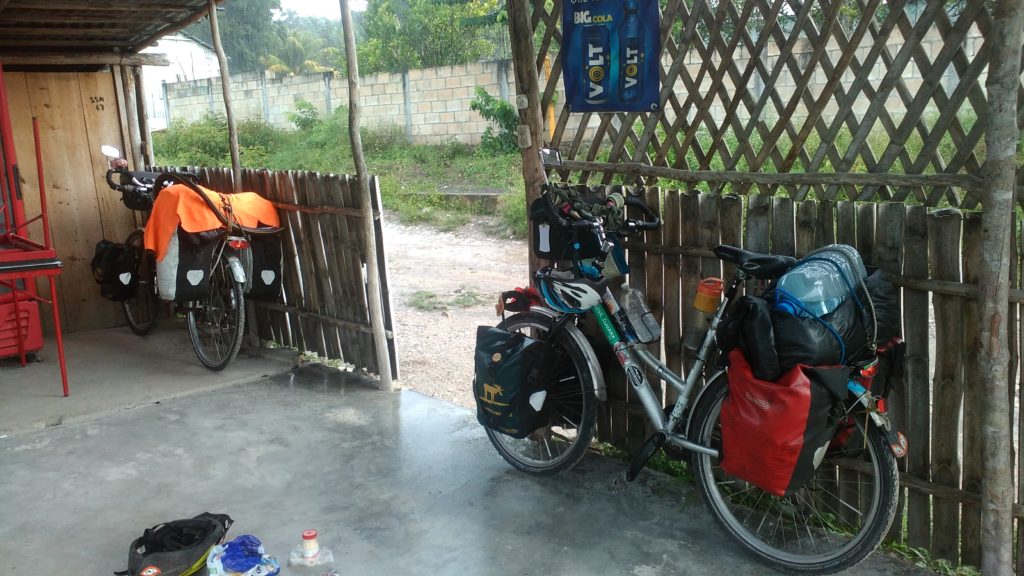
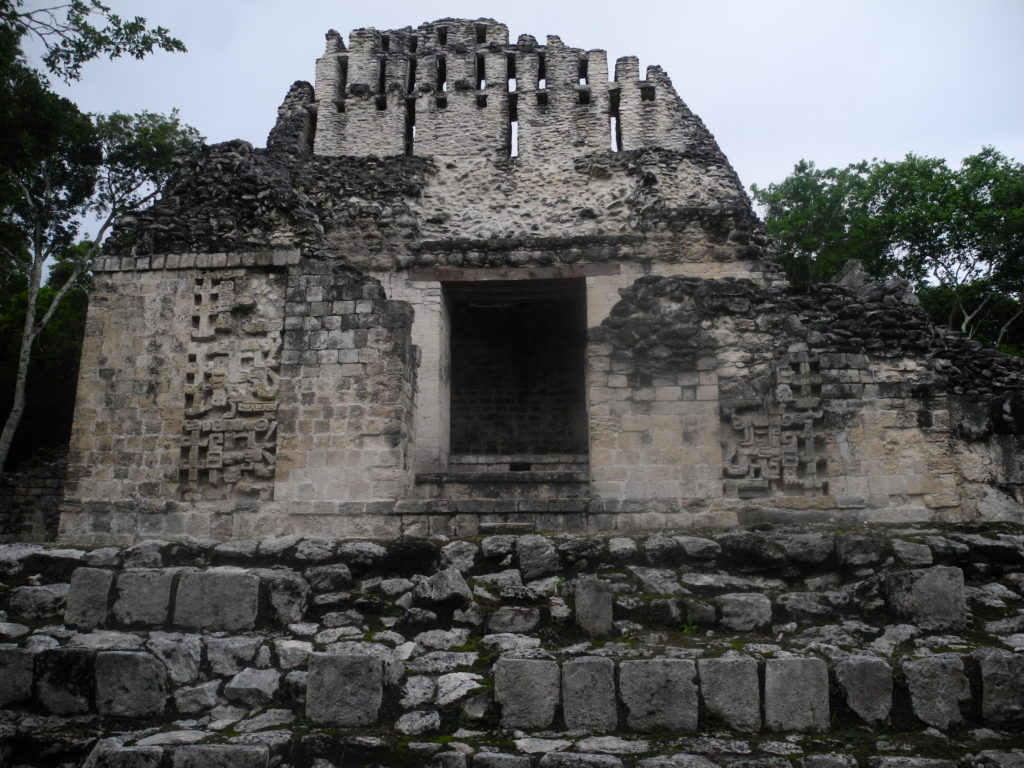
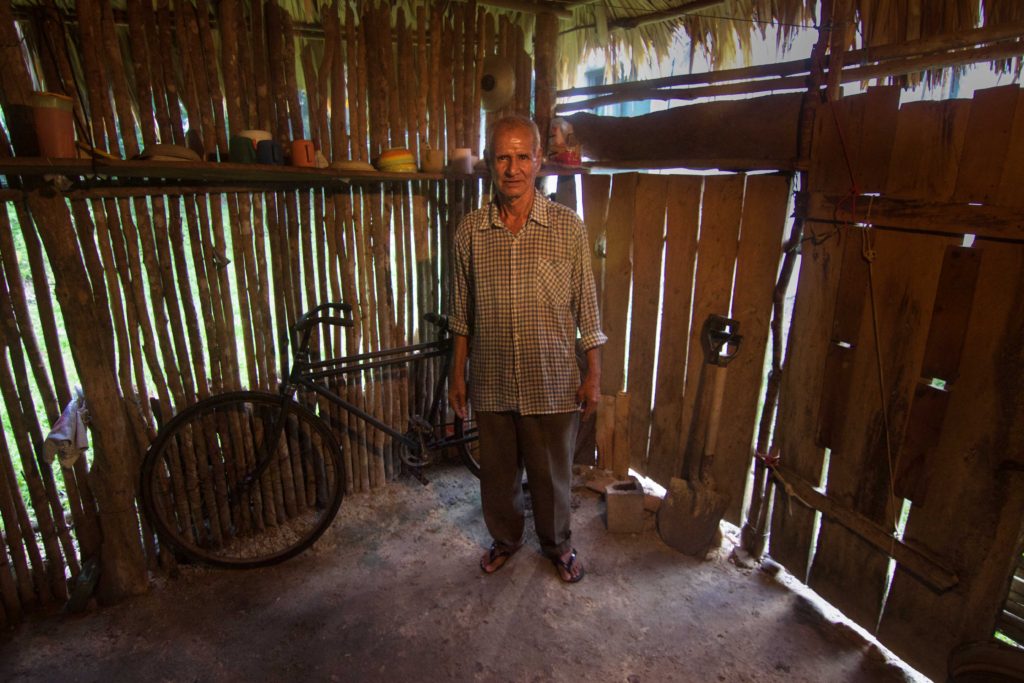
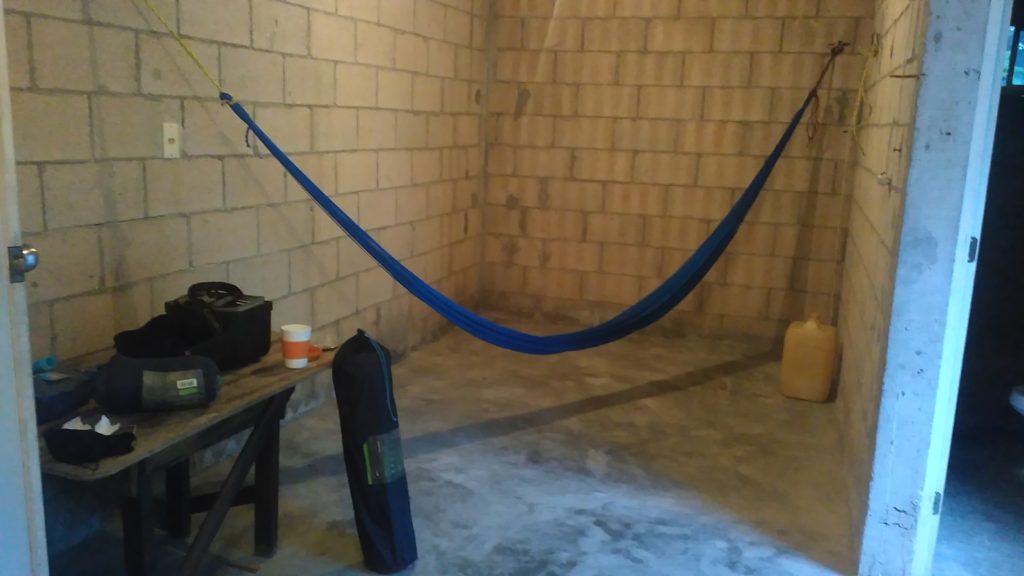
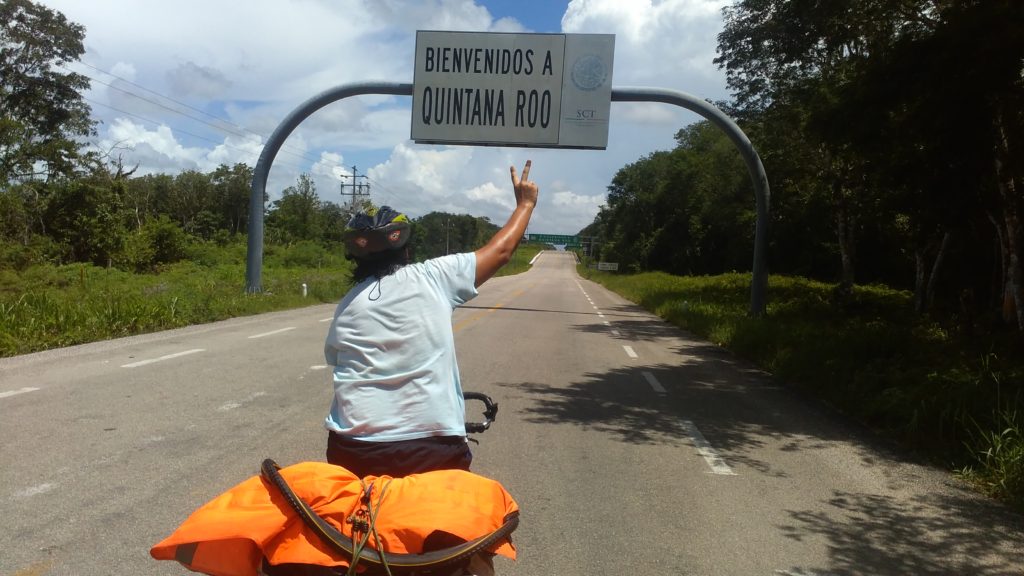

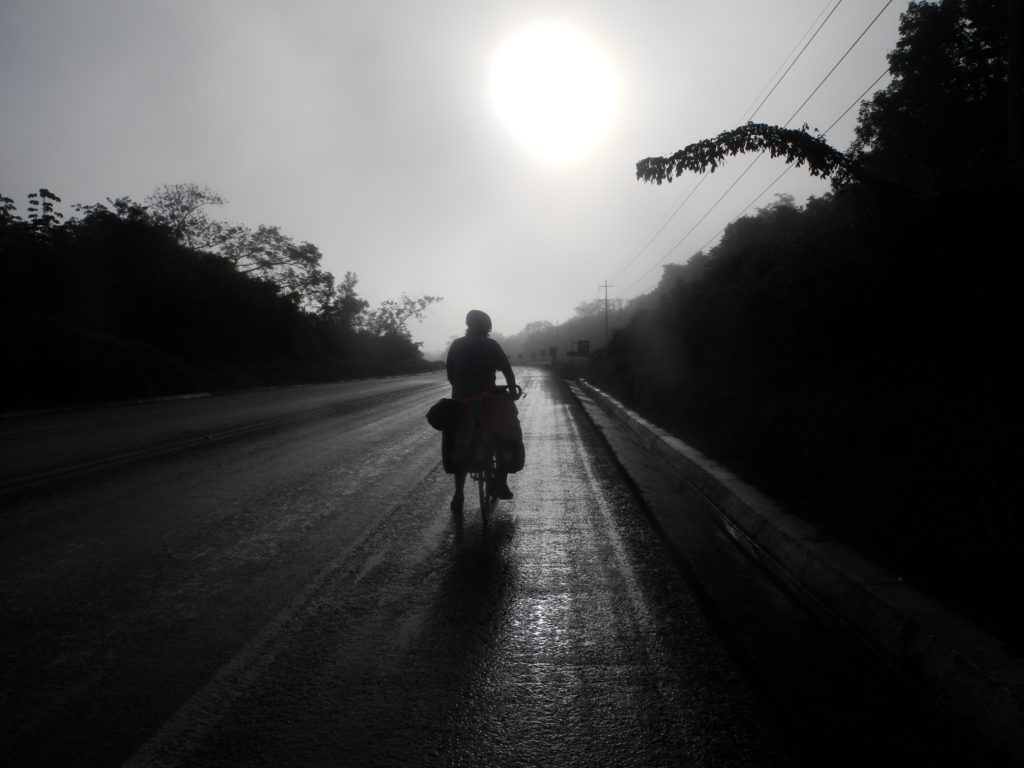
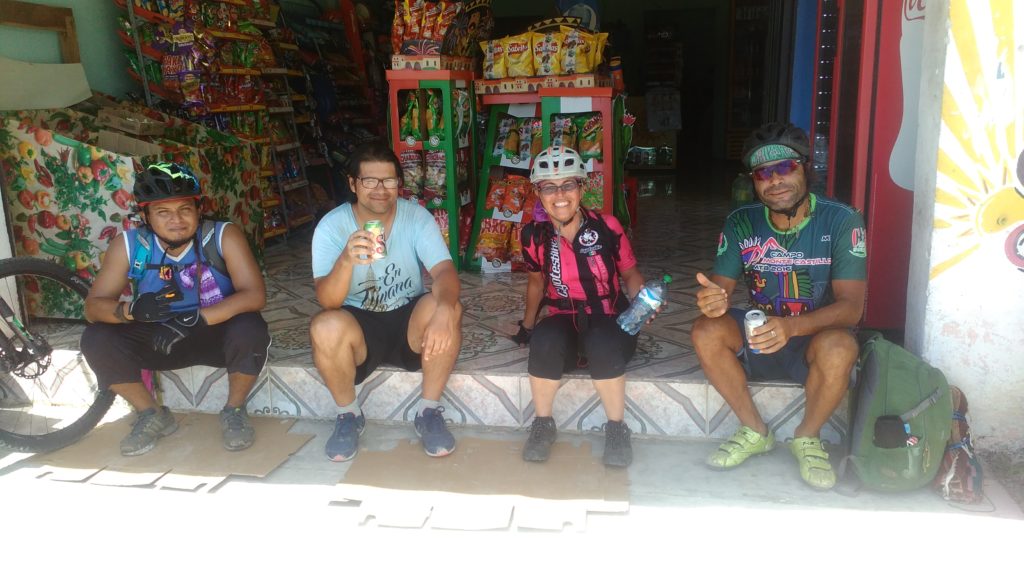
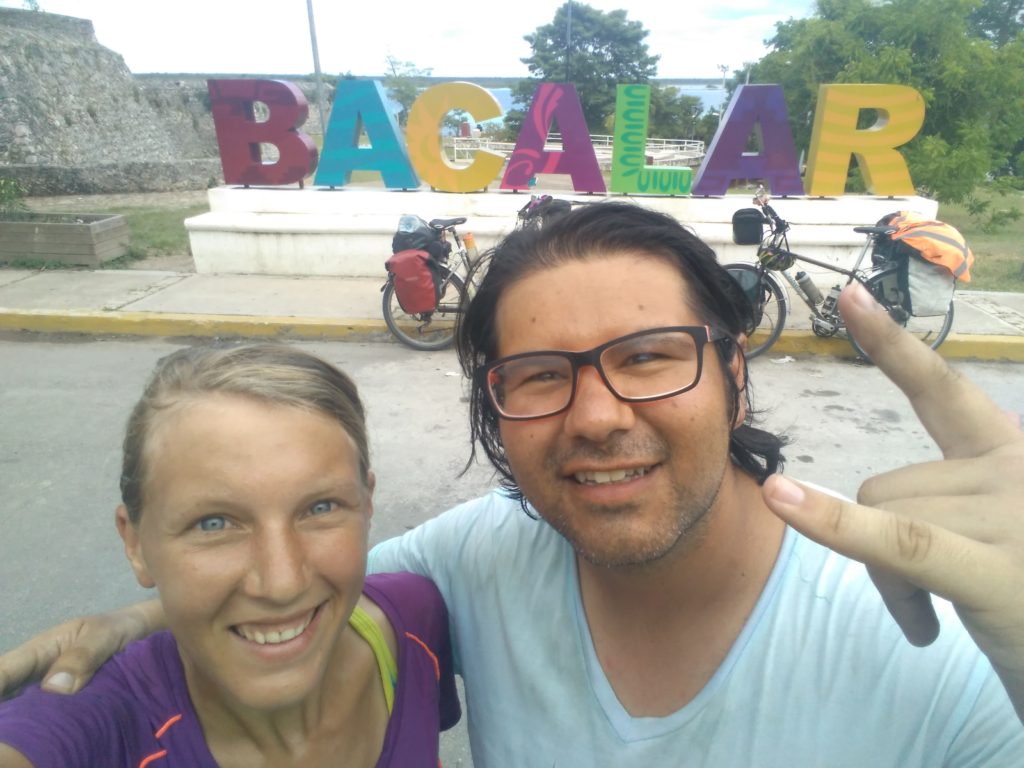
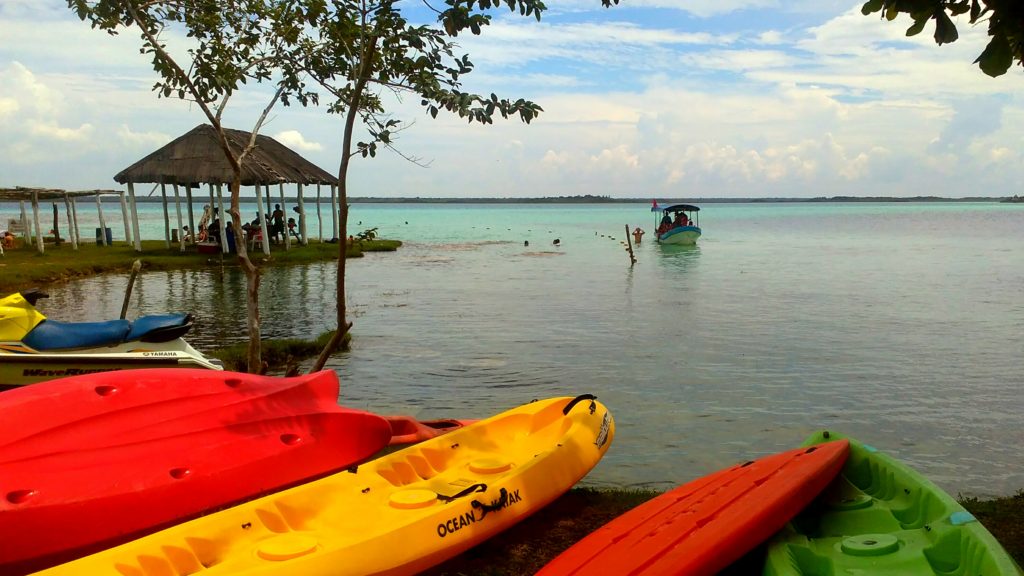
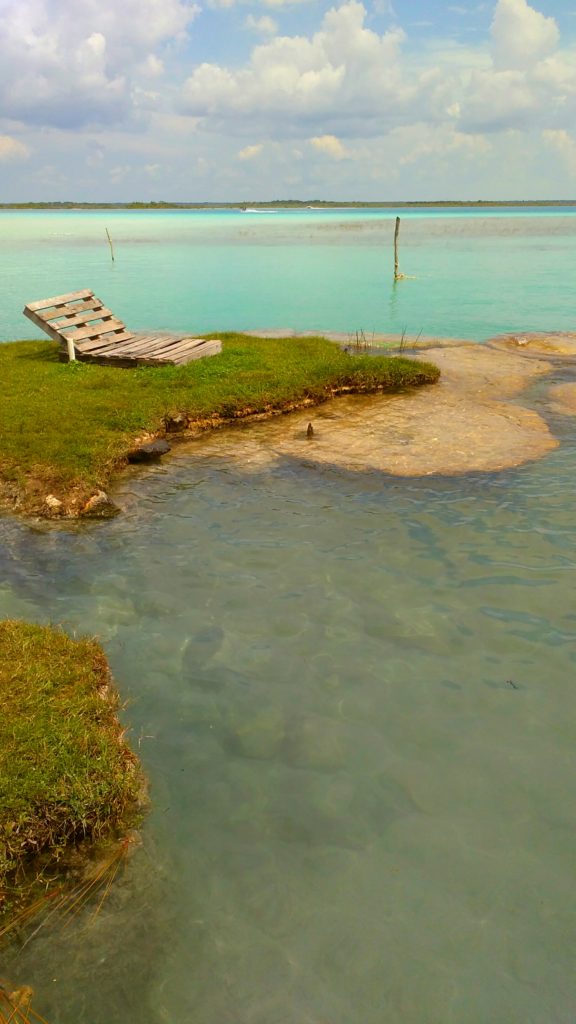
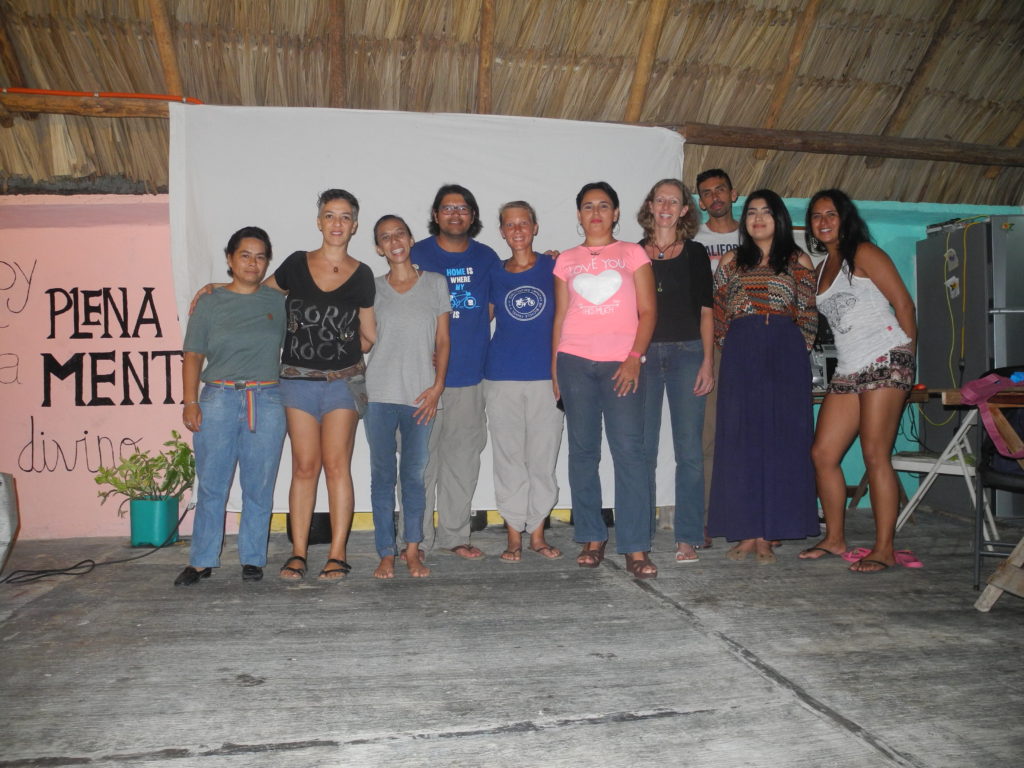
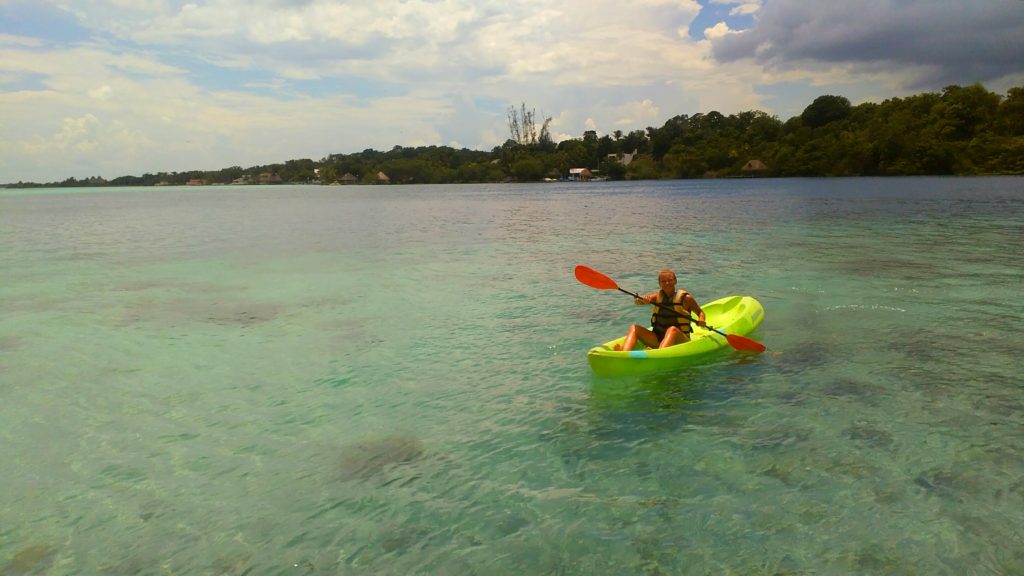

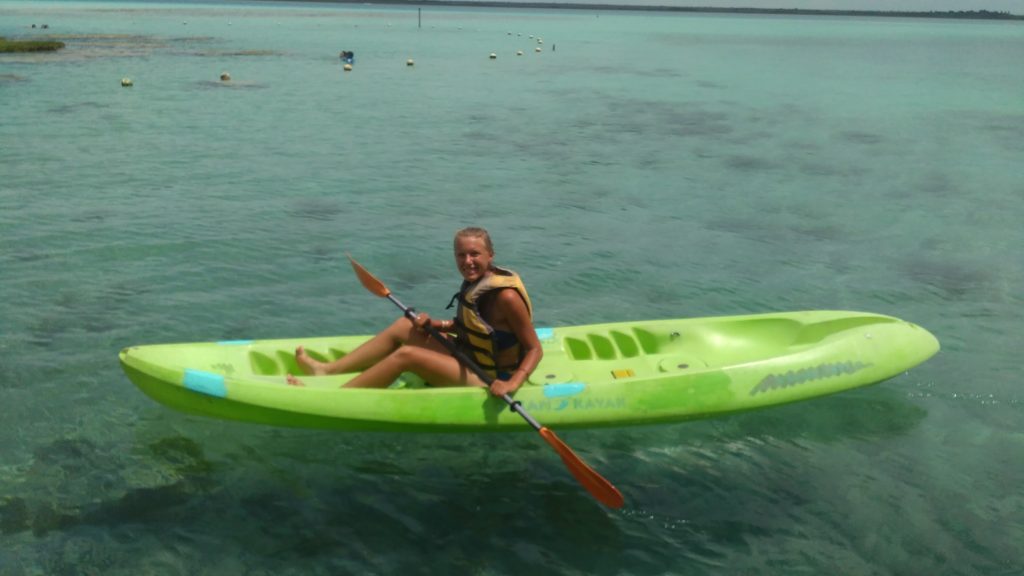
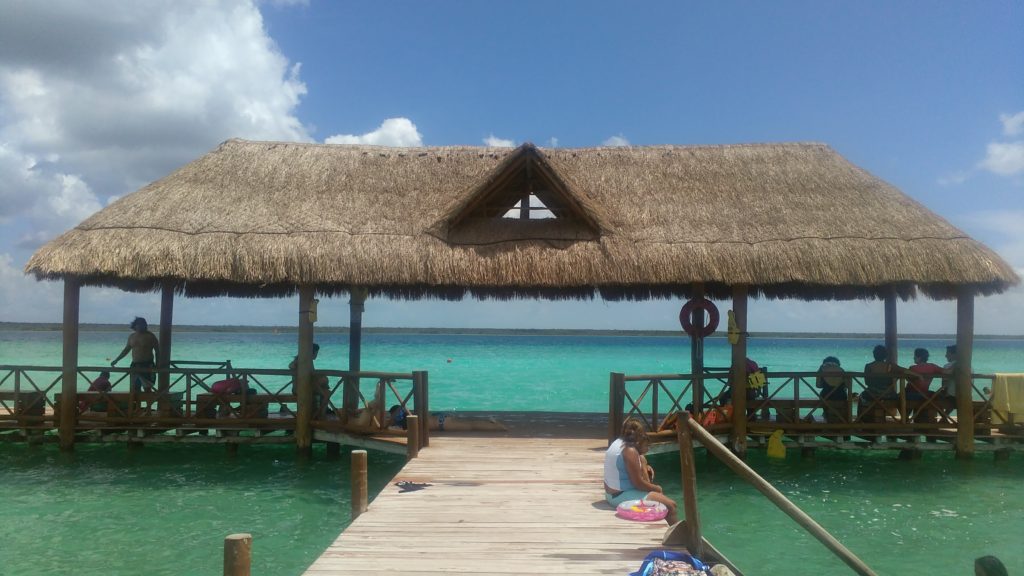

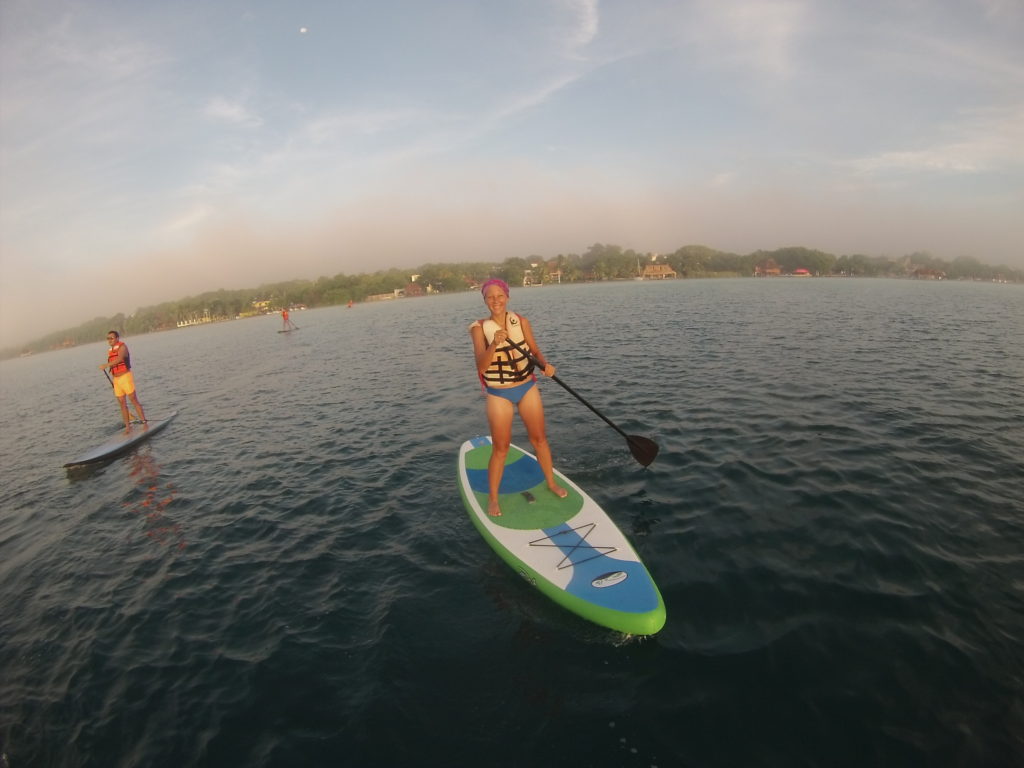

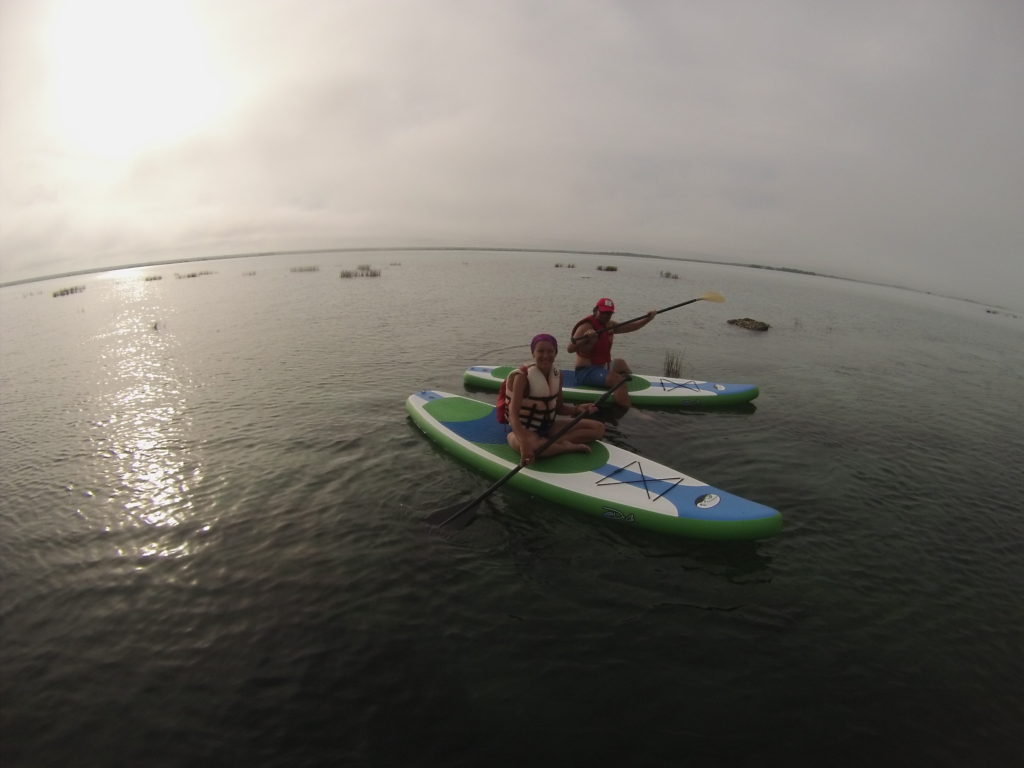
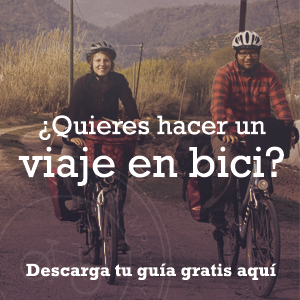




Pingback: Cycling Southern Mexico – Tabasco and Campeche by bike - Tasting Travels
Pingback: Discovering the Mexican Caribbean by bicycle - Tasting Travels
Pingback: Von Mayaruinen und Urwald – Yucatán mit dem Fahrrad - Tasting Travels